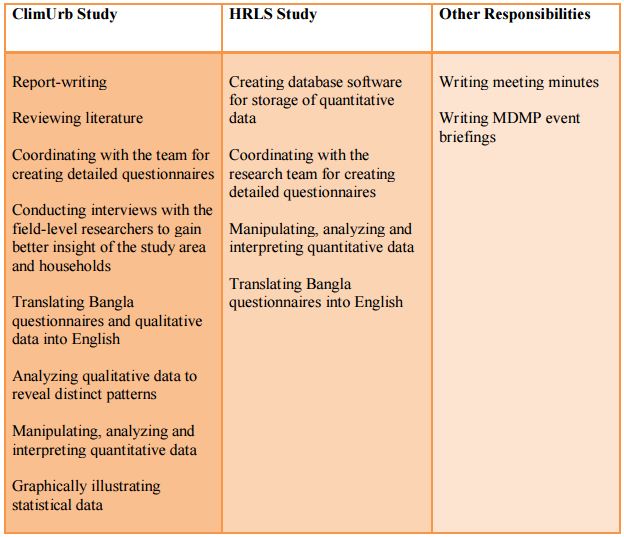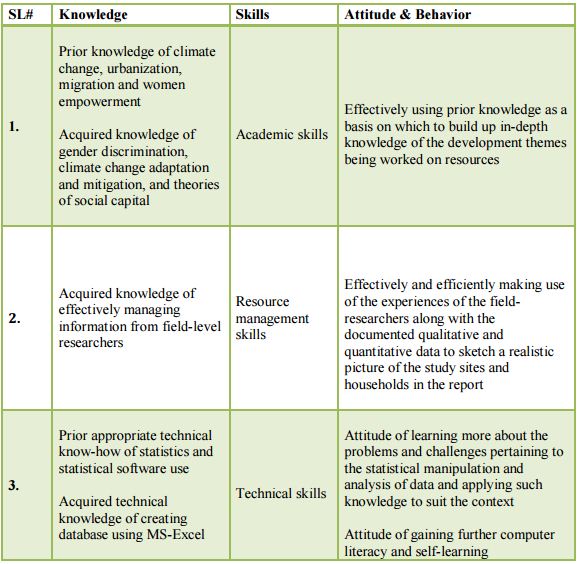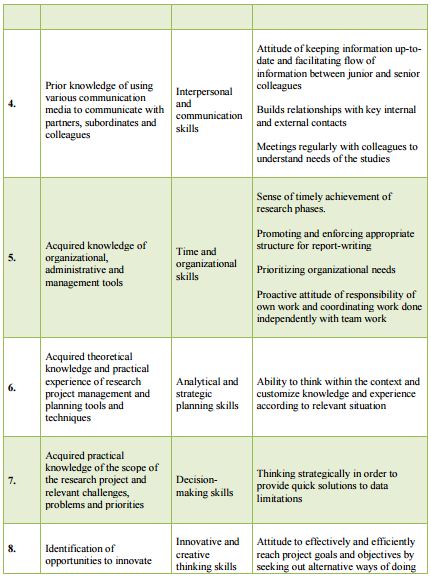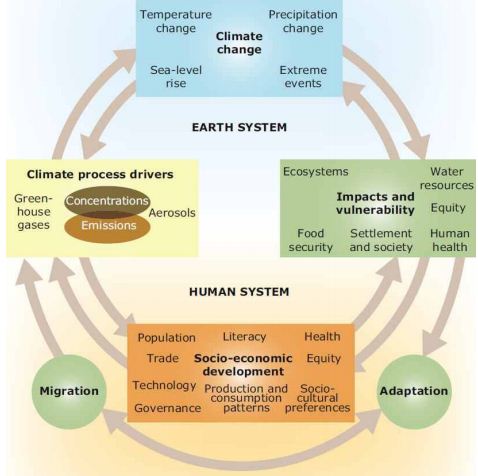Poverty and Climate Change in Urban Bangladesh (ClimUrb):
A Case Study of Motijhorna, Chittagong
About BRAC Development Institute (BDI)
BRAC Development Institute (BDI) at BRAC University is uniquely placed as a resource center that plays a pivotal role in the promotion of research, provision of graduate training and building of knowledge concentrating on various social problems such as poverty, inequity and social injustice in the global south. BDI takes an inclusive, multidisciplinary approach, across research, teaching and communications, to persistently challenge conventional knowledge and press on a southern voice in the global development discourse.
Bangladesh houses a multitude of development organizations that work towards improving the social and economic conditions of the people here across various development themes. However, it often is the case that a lot of the learning gathered through the experiences of the massive development organizations in Bangladesh such as BRAC, Grameen and Gonoshasthaya Kendra is not being communicated effectively due to lack of collaborative efforts. Their roles in the creation of knowledge has become apparent just when the World Bank, DFID or other such donor organizations or academics from the North decided to account for them. These organizations by and large have an inadequate organic structure and competence to enunciate and propagate their work, and hence, much of the knowledge and lessons learnt in the development sector get missed. Contrarily, BDI, by positioning itself at the center of researchers, academics and learners, development organizations, policy makers and donor agencies, aims to fill some of these missing links.
According to the BDI website, BDI develops solutions to the problems of poverty, inequality and social injustice. Its core functions are:
- Producing practical knowledge by ensuring visibility of the innovative development experiences in the South and upholding the southern voice in the global development discourse
- Bringing together experts – practitioners, academicians and policy makers – focus on specific problems of the poor and develop new strategies and pathways to resolve these conditions
- Breeding new ideas using rigorous qualitative and quantitative studies and pilot projects to understand process and
- Advocating policy to buttress pro-poor development strategies.
All research projects and academic degrees/courses offered by BDI correspond to these core functions.
Programmes Contributed to during the Internship
During my internship period, I have contributed in research studies based on climate change impacts in urban Bangladesh called ClimUrb and on property rights in rural Bangladesh called HRLS. A brief overview of these two research studies will be provided under the following subsections.
Poverty and Climate Change in Urban Bangladesh (ClimUrb): A Case Study of Motijhorna, Chittagong
This research is a case study of a low-income settlement called Motijhorna in the city of Chittagong and is a part of a three-year research project on ‘Community and Institutional Responses to the Challenges Facing Poor Urban People in Bangladesh in an Era of Global Warming’. The Economic and Social Research Council (ESRC) and the Department for International Development (DFID) have funded the project.
The aim of this report is to illustrate how the urban poor in Bangladesh deal with various levels of physical, socio-economic and political vulnerabilities which are key factors in exposing them to three types of climate change impacts: rapid-onset events, gradual-onset processes and cascade effects. Moreover, the report investigates how the urban poor actively develop a multiple adaption practices to cope with such vulnerabilities, and how various power structures add to their adaptive capacity and capabilities.
The research is based on an analytical framework that provides an understanding of how a number of key factors bring about and/or hinder access to, and influence over, resources, decision-making and actions on climate change adaptation of the urban poor as shown in the figure below:

Climate variability and change consist of rapid onset events such as landslides and cyclones, slow onset events such as heavy rainfall and extreme weather conditions, and cascade effects such as water-logging, poor sanitation and quality of water supplied, and growing congestion of population in the settlement studied. These factors then affect the socio-ecological context of the settlement dwellers, hence leading to increased social and physical vulnerabilities including reduced human security, pressure on utilities and increased environmental degradation.
Consequently, the settlement dwellers have to continually adapt to their worsening socioecological context through various adaptation practices carried out either as individual household/groups or as both by making use of their existing socio-economic resources such as livelihoods, group savings, and social capital. A number of institutions, counting educational institutions such as UCEP School, NGO- and informal community-based microfinance institutions such as BRAC and the ‘Taan’ cooperatives, health related organizations such as Momota Clinic and PSTC, government organizations such as WAPDA and the city corporation, and other religious and community-based social welfare organizations such as Jogotbondhu Asrom and the Youth Club, play a pivotal role in aiding the settlement dwellers adapt to their socio-economic and climate variability and change related vulnerabilities at the household and community levels. External resources, such as donor funds that form the financial basis of NGO projects and the vocational schooling curriculum innovated by UCEP that centers on skill building and leadership development of the students over a relatively shorter period of time compared the conventional schooling system, support and contribute to the institutional support received by the settlement dwellers and to their socio-economic resources.
Given the context of the study, some recommendations and policy considerations were suggested for improving the adaptation practices to deal with the physical/environmental and socio-economic vulnerabilities faced by the settlement dwellers:
- planting trees on the mountains and improving drainage facilities to check soil erosion
- ensuring that no more house construction is undertaken in the risk-prone areas
- opposing mountain soil cutting and house building in the risky regions by community-level organizations as a preventive measure
- increasing the supply of housing and high-rise buildings in safer locations
- educating the people of about the ill-effects of dumping
- raising social awareness, uniting the people who are victims of corruption, using the various organizations that people are members of as a platform for demanding their rights and by facilitating mass media coverage against corruption and bribery by the staff working the utility-providing institutions
- integrating marginalized people, who are involved in activities such as drugs dealing, into the society by providing them with support and legal livelihood opportunities so that such vices may be wholly rooted out from the settlement.
Women’s Property Rights: An Inquiry into Barriers to Change
Although the National Constitution of Bangladesh has secured women equality and equal protection along with a legal basis for upholding women’s property and inheritance rights, gaps and legal loopholes subsist which continue to compromise the overall aim of non-discrimination with regard to property rights. In many cases, religious and traditional practices often persist with regard to family concerns, and lucid disparities along gender lines are often the norm. In such circumstances political will is required to make sure that laws are implemented justly, even in broad-based contexts. Effort is also needed to change personal attitudes towards equitable gender relations. Many generally held views in effect hamper women’s development and equality, and create obstructions to the relevance of laws locally.
The BRAC HRLS programme on Property Rights has a network of Legal Aid Clinics
(LAC) staff by lawyers that offer support to the community on land related disputes. The BRACHRLS programme on property rights makes available training to community members as legal educators and service providers to deal with the deficiency of knowledge and form spaces of dialogue and exchange information amongst the rural poor on property rights.
The programme distinguishes that in order to attain noteworthy economic empowerment of women, elemental changes are requisite in the long-held denial of the rights of women.
Comprehending the dynamics of the problems related to women’s property rights particularly and why it occurs will contribute to understanding what is needed in order to put a stop to it. Thus, BRAC HRLS commissioned this study to progress towards developing a better programme that would work for ensuring women’s property rights, safety and social equality.
The purpose of the work is to document and better understand the interplay of factors that violate women’s entitlement to property right as well as their relationship between individuals, communal and societal levels.
According to the study, the first “building blocks” for other activities of the HRLS programme to scale-up are research and documentation help to define and analyze social practice, identify the impact of laws and policy, and clarify individual and community attitudes and behavior. The programme has accomplished in developing a firm basis from which to advance change. The research came up with important recommendations including:
- training local leaders
- creating messages tailored to the beliefs and traditions of local populations
- reaching out to communities
- using modern technology to expand the program
- emphasizing principles of equality, and advocating and lobbying for political will.
Tasks Undertaken During Internship
As has already been mentioned, the internship provided opportunities to contribute in the ClimUrb study and the HRLS study. Besides working for these studies, other trivial responsibilities were allotted from time to time. Often the nature of the tasks completed for the ClimUrb study and the HRLS study was similar, although the scope of the tasks for HRLS was relatively limited. The jobs and responsibilities undertaken during the internship period have been summarized in the following table:
Table: Tasks undertaken during the internship

Skills & Competencies Acquired
In an attempt to elaborate on the skills and competencies acquired, the existing set of skills and competencies have been mentioned, followed by how working at BDI has enhanced those skills and competencies and enabled me to acquire new ones. The table below enunciates the skills and competencies:
Table: Skills and competencies acquired


Future Plan for Using the Skills & Competencies
The internship experience has rendered me more confident in exploring other fields that are not part of my specialization. For instance, it has made me more conversant with different types of computer software, and my prior fear of technology has declined. Now I wish to take a more interdisciplinary approach in pursuing my academic career by combining economics, game theory, mathematics, computer science, statistics, development and international relations to find solutions to national and international development issues.
Impacts of Climate Change
In this section of the report, the topic of climate change, its causes and impacts will be introduced, with reference to the global efforts being put into action to mitigate and adapt to it.
The context of the impact in Bangladesh and the relevant adaptation strategies planned by the country will be enunciated and the relevance of the ClimUrb study will be evaluated with regard to such strategies.
This section will be arranged as follows. First, the working definitions of climate change along with its trends and economic impacts at global level will be expressed. Second, the international agreements with regard to adaptation and mitigation actions will be reviewed. Next, how Bangladesh is being impacted due to climate change will be discussed. Thus, having explained the backdrop of the strategy and action plan, a summarized discussion of BCCSAP 2009 will follow in order to familiarize the audience with its scope and breadth. Following this, the significance of the ClimUrb study will be articulated.
Climate Change: Causes, Trends & Impacts

Climate change can be most generally defined as change in the statistical properties of the climate system over long time periods, regardless of causes. Short-term fluctuations in the climate system are not regarded as climate change. A more technical definition of climate change may be sought from the Intergovernmental Panel on Climate Change:
“Climate change refers to a change in the state of the climate that can be identified (e.g., by using statistical tests) by changes in the mean and/or the variability of its properties, and that persists for an extended period, typically decades or longer. Climate change may be due to natural internal processes or external forcings, or to persistent anthropogenic changes in the composition of the atmosphere or in land use. Note that the United Nations Framework Convention on Climate Change (UNFCCC), in its Article 1, defines climate change as: ‘a change of climate which is attributed directly or indirectly to human activity that alters the composition of the global atmosphere and which is in addition to natural climate variability observed over comparable time periods’. The UNFCCC thus makes a distinction between climate change attributable to human activities altering the atmospheric composition, and climate variability attributable to natural causes.”
Global climate change has attracted a lot of attention over the recent decades with reference to economic evaluation of how greenhouse gas emissions that leads to climate changes characterize an environmental externality and the excessive use of a common property resource (Harris and Roach, 2009). This takes effect since the atmosphere is a global commons into which individuals and firms can discharge polluting elements, leading to a global pollution that gives rise to a negative externality impacting the environment and people worldwide. Although regulations exist in many developed countries that underline the limiting of the discharge of pollution into the environment, such controls are not great in number and are often not enforceable for all types of pollutants. For instance, a small number of regulatory controls are in action for the primary greenhouse gas, i.e., carbon dioxide. Interestingly, although this air pollutant does not exhibit any kind of negative spill-over effects at the ground level during the short run, the build-up of more-than-needed carbon dioxide in the earth’s atmosphere lead to grave consequences for the global temperature and climate in the long run. However, there exists scientific dilemma regarding the scope and scale of such negative impacts. It logically follows that if the consequences of polluting the environment and aggravating climate change leads to negative impacts for the world at large, then it is in the benefit of all to limit pollution-generating activities in order to prevent further harm to the environment and the climate system. Hence, it appears that the issue of climate change can best be characterized as a public good problem, resolving which requires a concerted action of governments, local and global organizations, and individuals all over the world.
Trends in global climate
The earth has increased in temperatures significantly according to dependable weather records: over the previous century, the global average temperature has escalated about 0.7°C (1.3°F).
However, global temperatures since 2000 have been predominantly higher, and data suggests that the rate of warming, currently about 0.13°C per decade, is rising, although not all areas are warming in the same way: the Arctic and Antarctic regions have been warming at about double the global rate.
Warmer temperatures have produced evident impacts on ecosystems. In most regions of the world, glacial meltdowns are taking place at a faster pace. Climate change is causing rise in sea levels, which is attributed to the melting of glaciers and ice sheets, and to the fact that water expands when it is heated. This blend of warmer oceans and melting ice has caused sea levels to rise at about two millimeters per year. Even though some warming may occur due to natural trends, the Intergovernmental Panel on Climate Change (IPCC) in 2007 concluded that:
“Most of the observed increase in global average temperatures since the mid-20th century is very likely due to the observed increase in anthropogenic greenhouse gas concentrations. Discernable human influences now extend to other aspects of climate, including ocean warming, continental average temperatures, temperature extremes, and wind patterns.” (IPCC, 2007, Summary for Policymakers, p. 10)
Hence, it appears that future projections of climate change are heavily determined by the path of future emissions. However, Even if all emissions of greenhouse gases were stopped right now, the world would still continue warming over the next few decades since the eventual environmental effects of emissions do not take form in the short run. Using a broad range of models with different assumptions about future emissions, the IPCC concludes that during the 21st century global average temperatures will increase between 1.1°C (2°F) and 6.4°C (11°F), and the range will more probably be between 1.8°C (3°F) and 4°C (7°F).
The extent of actual warming and other effects on the climate system will depend upon the intensity at which atmospheric concentrations of carbon dioxide and other greenhouse gases are ultimately stabilized. The present atmospheric carbon dioxide concentration is around 380 ppm.
When the contribution of other greenhouse gases is considered, the effect taken as a whole is comparable to a concentration of 430 ppm of carbon dioxide, known as CO2e. Projections imply that stabilizing greenhouse gas concentrations at 450 ppm CO2e would be 90% likely to ultimately cause a temperature increase between 1.0 and 3.8°C, with a slight likelihood that the rise could be notably more than this. With present greenhouse gas concentrations in the atmosphere at 430 ppm CO2e, stabilization at 450 ppm would be tremendously challenging.
Economic Analysis Of Climate Change
Scientists have modeled the effects of a projected doubling of accumulated carbon dioxide in the earth’s atmosphere. Harris and Roach (2009) list some of the predicted effects of such modeling:
- Loss of land area, including beaches and wetlands, to sea-level rise
- Loss of species and forest area, including coral reefs and wetlands
- Disruption of water supplies to cities and agriculture
- Health damage and deaths from heat waves and spread of tropical diseases
- Increased costs of air conditioning
- Loss of agricultural output due to drought
- However, all effects are not negative. Some positive impacts might include:
- Increased agricultural production in cold climates
- Lower heating costs
- Less deaths from exposure to cold
Over and above these effects, there are some other less predictable but possibly more detrimental effects, counting:
- Disruption of weather patterns, with increased frequency of hurricanes and other extreme weather events
- A possible rapid collapse of the Greenland and West Antarctic Ice Sheets, which would raise sea levels by 12 meters or more, submerging major coastal cities
- Sudden major climate changes, such as a shift in the Atlantic Gulf Stream, which could change the climate of Europe to that of Alaska
- Positive feedback effects, such as an increased release of carbon dioxide from warming arctic tundra, which would speed up global warming
As is apparent, the negative impacts far outweigh the positive impacts, emphasizing the undesirability of climate change, and the IPCC analyses suggest that along with increasing emissions and higher temperatures, negative effects will aggravate while the positive effects lessen.
International Agreements Relating to Action against Climate Change & Its Impacts
As has already been emphasized, climate change is a global phenomenon, and hence, it requires a global effort. Reducing the negative impacts of climate change entails reduction in the discharge of polluting wastes into the environment. While economic activities pursued by nations enhance their gross domestic products, standard of living and overall development, the same economic activities release wastes into the environment. Hence, while it is important to mitigate climate change impacts in order to have a more livable and sustainable world for the present and the future generations by limiting release of wastes into the environment, the noble objective calls for actually limiting pollution-generating economic activities (given the current technology). Hence, nations and groups are not always willing to sacrifice economic activities for tackling with the problem of climate change because it is likely to hinder their short run economic prosperity and standard of living. Therefore a binding international agreement is necessary, especially if the policy goal is to reduce emissions by 50-80%, which is quite a significant percentage.
Harris and Roach (2009) assert that the most wide-ranging international agreement on climate change has been the Kyoto Protocol, under which industrial countries agreed to greenhouse gas emission reduction targets by 2008-2012 relative to baseline emissions in 1990; such as the United States acceded to a 7% reduction, France to an 8% reduction, and Japan to a 6% reduction.
However, developing nations such as China and India are not obligated to emissions targets under the treaty. This is mainly because while the well-off countries may already have the economic capability to adapt to many of the effects of climate change, the poorer countries will be unable to put into practice preventative measures due to lack of technology, expertise and resources.
Although by the October of 2007, the Kyoto Protocol had been ratified by 176 countries, the United States signed the treaty in 1998 but never ratified it. In 2001, the Bush administration rejected the Kyoto Protocol, presenting the rationale that negotiations had been futile and that a different approach was required. This had been a serious blow to reaching a global consensus for fighting climate change since the US one of the largest consumers of energy in the world, and hence, is a key polluter. However, the Kyoto Protocol still came into effect in 2005 when Russia ratified the treaty in November 2004.
The Kyoto Protocol emphasizes on mitigating climate change, that is to say, countering the destabilizing effects brought about to the climate system by, for example, absorbing excess carbon dioxide from the atmosphere using carbon sinks. However, cost-effective and cost-efficient methods need to be used to achieve such goals and objectives so that the level of economic activities sacrificed are held at a minimum. Hence, the treaty includes three “flexibility mechanisms”:
- Trading of emissions permits are allowed among nations that are bound by specific targets. Therefore, when one nation is unable to cut down on its carbon emissions, it is able to buy emission permits from another nation which has become more efficient in lowering carbon emissions to the extent that the level of emissions has come down below the requirements. Hence, trading permits allows for efficient allocation of resources as countries are able to pollute at their optimal polluting levels while total level of global pollutions is being controlled. The European Union has set up a carbon trading system which went into action in 2005.
- Another flexibility mechanism is joint implementation, through which an industrial nation, in place of reducing emissions within its own boundaries, can finance emissions reducing projects in nations bound to emissions targets, such as in transitional economies like Lithuania, and in exchange obtain credit for contributing to receives credit for it.
- Finally, there is the clean development mechanism of CDM. Through this mechanism, similar to the previous one, an industrial nation can obtain credit for financing emission-reducing or emission-avoiding projects in developing nations that are not subject to any emissions reducing targets.
The primary goal of the Kyoto Protocol was a 5% reduction (compared to the 1990 baseline) in greenhouse gas emissions among participating countries. As of 2004, total emissions among countries that have signed the treaty have decreased by about 3% relative to the 1990 baseline. However, Harris and Roach (2009) are of the opinion that this figure is dubious because much of the decrease may have been caused by the collapse of the former Soviet Union and other Eastern European countries.
While, negotiations are currently in progress to draft a successor to the Kyoto Protocol, a pertinent question will be whether the developed countries such as the United Nations would be willing to reduce their emissions. Nevertheless, even if the United States has opted out of the Kyoto Protocol, it has formed its own climate change goals. Unlike the Kyoto Protocol, these goals are voluntary rather than binding, and hence, the international community does not have any actual say in these goals.
Hence, it appears that achieving fruitful reductions in greenhouse gas emissions globally requires a stronger pact amongst the international community that will force the major polluters of the world to change their production and/or consumption patterns. Violating nations should be brought under trial and made to compensate for their breaking of pact so that mitigation strategies truly come into effect.
Climate Change Impacts on Bangladesh
Bangladesh’s present climate is monsoonal and subtropical with seasonal rainfall, warm temperatures and high humidity. Bangladesh’s swampy coast is located at the tip of the northern Indian Ocean frequented by strong cyclonic storms and tidal waves. Almost every year Bangladesh experiences climatic disasters such as floods, cyclones, tornadoes and tidal bores caused in part due to its unique geography (CIF, 2010). According to CIF (2010), with an average elevation of four to five meters above sea level, approximately one-third of the country is prone to tidal inundation, and during monsoons up to 70 per cent of the country becomes flooded.
Current data suggests that Bangladesh’s temperature prevalent during the monsoon (from June to August) season has risen (MEF, 2005). It is facing the effects of a warmer climate since the summers are becoming increasingly hotter, while the monsoons are becoming more unbalanced, and heavy rainfall is occurring over short periods (CIF, 2010). According to the National Adaptation Programme of Action (NAPA), there is also substantiation of greater saline intrusion in the coastal regions.
Bangladesh is has been pointed out as the country most at risk due to climate change, predominantly because of the effects of sea-level rise (CIF, 2010). The country is likely to go though more recurrent and life-threatening tropical cyclones, heavier and more erratic rainfall, higher river flows, erosion of river banks, melting of Himalayan glaciers, and sea level rise (MoEF, 2009). The likelihood of large scale relocation of people from coastal districts (due to cyclones, inundation and increased salinity) to other parts of Bangladesh and abroad is a grave concern of security. There are 19 coastal districts in Bangladesh with a population of close to 40 million, which provides an estimate of how large the scope and level of relocation action will be.
Lack of proper adaptation measures along the coastal region will result in displacement of a significant proportion of the population of the country. Since Bangladesh is primarily a rural-based country with approzimately 80% of the population depending on agricultural activities (agriculture accounts for about one-fifth of the total value of the country’s gross domestic product of GDP), damage to the physical environment will bring about a significant impact upon the livelihoods of the greater proportion of the population. Climate change is expected to adversely impact Bangladesh’s:
- food security, that is, agricultural crops, fisheries and livestock
- water resources
- health, as decline in the quality of quantity of food results in malnutrition and also as outbreak of diseases occurs
- infrastructure
- forests (especially the Sundarbans) and biodiversity.
Furthermore, the high population density urban areas are likely to face incidences of water logging conditions due to lack of proper drainage conditions.
Significance of the ClimUrb study
The ClimUrb study emphasizes on various types of adaptations that are necessary for the densely populated urban areas for dealing with the adverse impacts of climate change. Roy et al. 2011 suggest that livelihoods adaptations, network adaptations, built-environment adaptations, institutional adaptations and external support adaptations are required for dealing with the compounding impacts of climate change in urban Bangladesh:
- Livelihood adaptations encompass how settlement dwellers engage in diversification, consumption smoothing, savings and investment, mobility, skill building and access to basic services.
- Built environment adaptations include design innovations, structural adjustments, space utilization, communal pooling and public spaces.
- Networks adaptations incorporate relief and rescue, and long-term recovery and loss distribution.
- Institutions adaptations consist of governance structure for access and management of civic facilities and basic services, governance structure for access to intelligence and market structure.
- External support adaptations involve research and development, and national and/or international civil society activists/pressure groups.
The research investigates into urban Bangladesh by taking account of the socio-economic and politico-legal context and comes up with tailored policy suggestions for diminishing the climatic, environmental and socio-economic vulnerability. The ClimUrb study that I particularly worked on came up with the conclusion that a thorough understanding of the context, technical and and feasibility analysis, long-term and short-term impact evaluation and a concerted effort aligning the goals and objectives of NGOs, GOs and community-level organizations that bolsters the strong social capital inherent in the community are key elements for catering to the needs of the settlement dwellers at Motijhorna, Chittagong.
Conclusion
The internship has nevertheless provided me with a thorough experience of working in the field of development research, especially in the context of climate change and geneder discrimination in property rights. It has helped me augment my academic, resource management, technical, interpersonal and communication, analytical, strategic management, time management, organizational, innovative and critical thinking and teamwork skills. These skills are going to be extremely valuable to me in the long run when I plan to embark on post graduate training in economics and development. This initial exposure to the professional research world has elevated my perception and thinking patterns, which will enable me to think outside the box and become more outspoken in the field of development research.
I candidly assert that delving into the ClimUrb research has introduced me to how urban areas are seriously under threat of climate change and has also helped clear some of my long held misconceptions about the working definitions, causes and impacts of climate change.
Moreover, it has forced me to ponder over how multiple development themes can be brought under the same umbrella and an innovative policy/project can be designed to address overlapping, yet distinct development concerns.
I personally feel that it is very unfair that although human induced changes in climate are largely attributable to the developed, industrialized nations, it is the poorer nations that have to bear the brunt of the adverse climate change impacts. Hence, climate change is not only an isolated issue of the environment, but a burning issue of social inequality. It is, therefore, the responsibility of the richer nations to aid the poorer ones by providing them with adequate technological support, expert advice, training and knowledge of climate change resilience, and migration and relocation by disregarding national/regional boundaries and taking an equitable, humane approach to this impending global predicament.
















